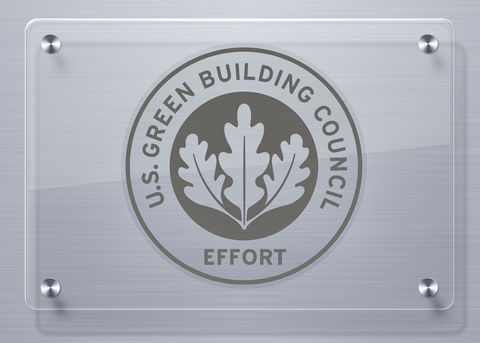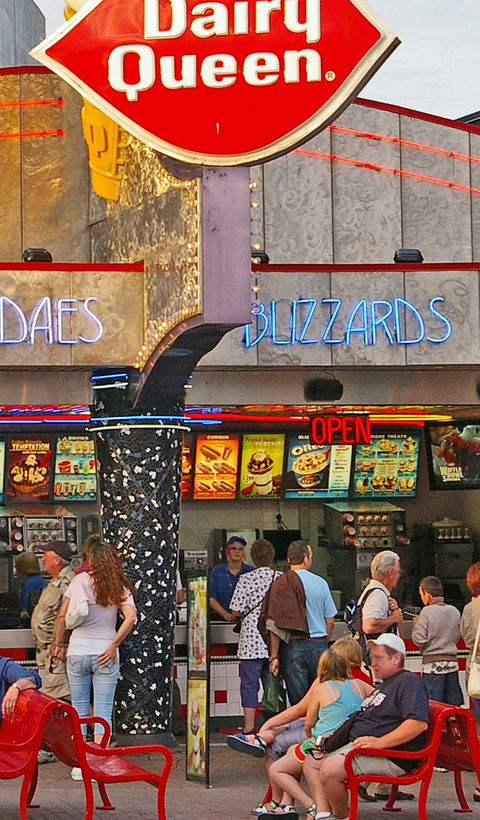Happy April Fool's Day!!!!!!!!!!!!!
April Fools
New Level of LEED Certification Could Increase Market Uptake
April 1, 2016
The LEED Effort plaque answers market demand for LEED equivalence, but the new program is not without controversy.
No more point chasing
The LEED Effort Plaque will “finally answer the market’s loud-and-clear demand for ‘LEED-equivalent’ buildings, without any need to actually achieve LEED equivalence,” enthused Tarquinia Sal, AIA, project manager of a LEED Effort pilot project—a new corporate headquarters for the American Coalition for Clean Coal Electricity (ACCCE). “We had been almost afraid to bring up LEED with the owner. But with Effort, we were actually really excited to talk about it. We even convinced them to try for net-clean energy, and they are producing all their own energy right there on the site.”
“A lot of people are deeply concerned about their ability to ‘sell’ owners on the more stringent energy, IAQ [indoor air quality], and material requirements of v4,” concedes Scot Horst, chief product officer at USGBC. “This is our message to you: we have heard you badmouthing us for the last five years. And although your persistent, entitled, and short-sighted demand for a watered-down standard makes us very, very, very sad, we still like you.”
How to get certified
Although designed to integrate with other levels of LEED certification, the LEED Effort add-on is “a little bit its own animal,” according to Horst.
BuildingGreen spoke with Peter Crowe, LEED consultant for ZüperMällZ, developer of a Dallas mega-mall that is piloting the LEED Effort program. Crowe highlighted a variety of features he said his team has “really appreciated” so far:
- There are only two prerequisites for certification: registering as a LEED project and completing that project. “The rest is optional,” emphasized Crowe.
- “Exemplary Performance” (EP) is available to project teams in a variety of categories, Crowe said, and the mall’s projected EP achievements will be noted on the plaque itself. For example, in the “Documentation Is Success!” category, teams can earn EP for submittals in excess of 1 terabyte (may include project photos). “Or,” Crowe adds, “less than 1 terabyte if you feel like you really got super close to meeting your goals.”
- Program participants will have access to the LEED Dynamic Plaque, which tracks building performance in real time, but metrics are based on “how hard you try to actually measure stuff,” according to Sal.
A few early hiccups
There are still some kinks to work out, both Sal and Crowe related to BuildingGreen.
Rick Fedrizzi awaits the arrival of a project team at the Dairy Queen in Niagara Falls, Ontario. One critic has slammed the Effort program for not offering a wider array of dining options, such as Chuck E. Cheese.
Sal had other critiques. As soon as a project is registered, for example, the team has the ability to connect with a LEED reviewer. Although she said customer service was “definitely on the upswing,” Sal felt this part of the program could use some improvement.
“When someone offers me handholding, I’m not expecting that to be figurative,” she said. “It would be nice, for my next project, to have the option of an actual reviewer to hold my actual hand.” She added that it would be “ideal” if the reviewer could do this “while literally bending over backwards.”
GBI to sue?
Although reaction to the LEED Effort program was generally positive among architects and green building consultants that BuildingGreen polled, not everyone is satisfied with the move.
The Green Building Initiative (GBI), developer of the rival certification system Green Globes, says it plans to file an antitrust complaint with the U.S. Federal Trade Commission. A GBI spokesperson told BuildingGreen the board is also considering a lawsuit for trademark infringement based on USGBC’s use of the term “LEED Equivalent” in its marketing of the LEED Effort program—a phrase the spokesperson says Green Globes laid claim to “under common law” as early as 2004.
Comments
Thanks for the laughs
Appreciate the belly laughs this morning. Ya had me going for the first paragraph.
Who says tree-huggers have no sense of humor.
Forgot how funny you guys can be. Best day of the year for sure. Not to be missed. Thanks!





Add new comment
To post a comment, you need to register for a BuildingGreen Basic membership (free) or login to your existing profile.